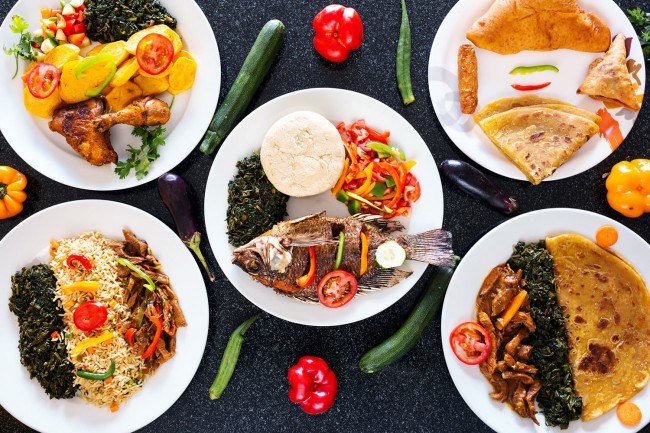Culinary Tanzania Safari Tasting’s Flavors: Embarking on a Tanzania safari is a journey of the senses, in which the breathtaking landscapes and stunning Tanzania flora and fauna are simplest a part of the adventure. Beyond the enduring savannas and towering baobab timber lies a culinary global ready to be observed.

The “Culinary Safari: Tasting Tanzania’s Flavors” is a unique study that provokes the taste buds, introducing you to the wealthy tapestry of conventional dishes, uncommon spices, and farm-to-desk Tanzania safari stories that make Tanzania’s culinary scene as various as its natural world.
What are a few should-strived Tanzanian dishes during a culinary safari?
A culinary safari in Tanzania gives a tasty array of dishes that replicate the nation’s rich cultural historical past and considerable herbal resources. Right here are some that should be used in Tanzanian dishes to tantalize your flavor buds and offer a real sense of the neighborhood flavors:
Pilau: This aromatic rice dish is infused with a blend of spices, together with cardamom, cinnamon, and cloves. Frequently prepared with meat or veggies, Pilau showcases the fragrant intensity of Tanzanian delicacies.
Culinary Tanzania Safari Tasting’s Flavors – Nyama Choma: A beloved Tanzanian favorite, Nyama Choma consists of grilled or roasted meat, usually meat of cow, sheep, pork, goat, or hen. It is frequently served with flavorful sauces and a side of greens.
Culinary Tanzania Safari Tasting’s Flavors – Ugali: A staple in Tanzanian diets, Ugali is a maize porridge that forms the foundation of many foods, It is enjoyed with diverse stews, curries, or sauces.
Culinary Tanzania Safari Tasting’s Flavors – Chapati: This unleavened flatbread is a common accompaniment to Tanzanian meals, Smooth and barely crispy, Chapati is ideal for scooping up flavorful dishes.
Maandazi: those candy, deep-fried dough pastries are a famous snack or dessert, and they come in numerous sizes and styles and are often loved with tea or espresso.
Biryani: encouraged by Indian delicacies, Biryani is a fragrant rice dish cooked with spices, veggies, and meat, it is a flavorful and aromatic pleasure.
Kachumbari: This fresh salad features a mixture of diced tomatoes, onions, cilantro, and on occasion cucumbers, and peppers which adds a burst of freshness to food.
Wali na Maharage: Wali (rice) and Maharage (beans) is a comforting aggregate often served together. The beans are cooked in a savory sauce, complementing the apparent rice.

Samosas: these savory pastries are often filled with minced meat, greens, or lentils, they are a scrumptious snack enjoyed for the duration of Tanzania.
Supu Ya Ndizi: This unique dish is a banana soup usually made with green bananas, coconut milk, and spices, it gives a lovely balance of flavors.
Exploring these dishes throughout your culinary Tanzania safari will not only deal with your taste buds but also provide a perception of the cultural variety and culinary traditions that define Tanzania. Many motels and eating places cater to those local flavors, ensuring that you can appreciate authentic Tanzanian cuisine while immersing yourself in the vibrant subculture.
Tanzania’s cuisine is a fusion of cultures, inspired by Arab, Indian, and African culinary traditions. With key ingredients like coconut, spices, rice, and plantains, the dishes replicate the country’s numerous background and herbal sources. The famous “Swahili delicacies” are a testament to the records of the coastal region as an important buying and selling publication at the historic Spice route.
Spices are the heart of Tanzanian delicacies, infusing each dish with a burst of taste and aroma. The aroma of cloves, cardamom, and cinnamon wafts through bustling markets and local kitchens. Learn about the spice change’s historic significance and its enduring effect on the Tanzanian culinary subculture.
Tanzania’s fertile lands yield an abundance of sparkling produce, from tropical results like mangoes and pineapples to hearty veggies and legumes. Immerse yourself inside the farm-to-desk Tanzania safari revel, where you can visit nearby farms, witness traditional cultivation strategies, or even participate in the harvest.
Are dietary restrictions and preferences accommodated at some point on a culinary Tanzania safari?
Yes, many Tanzania safari resorts, motels, hotels, and other eating places are familiar with catering to dietary regulations and alternatives. Vegetarian, vegan, and gluten-loose options are regularly to be had.
Exploring Coastal Delights: From Zanzibar to the Mainland: Tanzania’s coastal regions provide an amazing culinary enjoyment, closely prompted by using the Indian Ocean bounty and seafood as flavors which can be discovered as the flavors of Zanzibar seafood more wealthy dishes, which include “Octopus Curry”, Ngisi, Jodari and “Pweza wa Nazi” (coconut squid).
Culinary Tanzania safari experiences offer more than simply meals; they provide a window into the Tanzanian way of life and traditions. Interact with neighborhood chefs, be a part of cooking instructions, and percentage food with households to deepen your information of the country’s manner of lifestyles.
All in all the “Culinary Tanzania Safari: Tasting Tanzania Flavors” is a voyage that takes you beyond the savanna horizon, introducing you to the coronary heart and soul of a nation via its appetizing dishes. Just as the animals of Tanzania tell memories of survival, the flavors of its delicacies tell testimonies of background, resilience, and the beauty of sharing. As you appreciate each chunk, take into account that every mouthful is a connection to the humans, records, and land that make Tanzania an outstanding destination.


